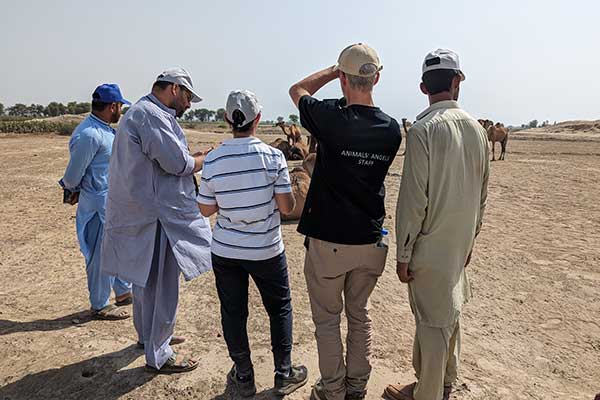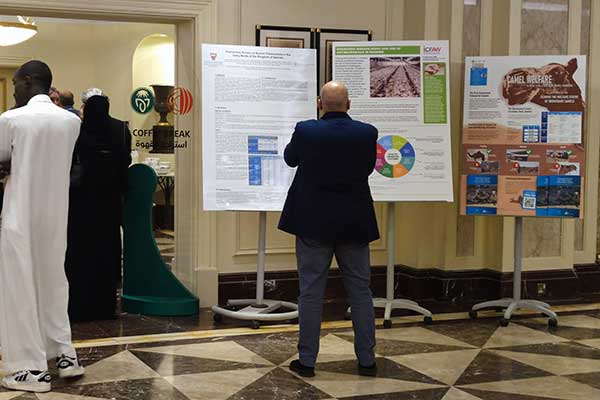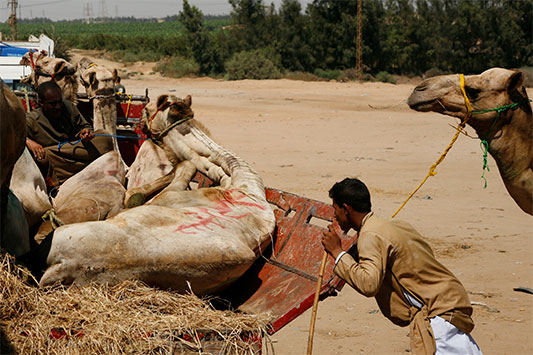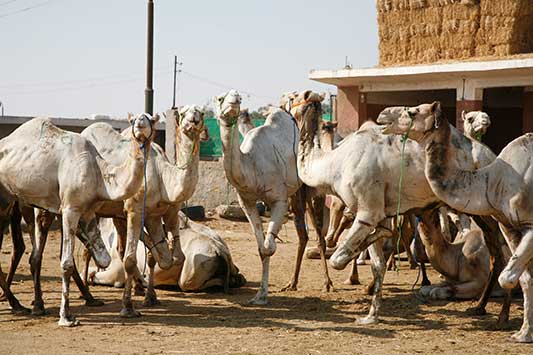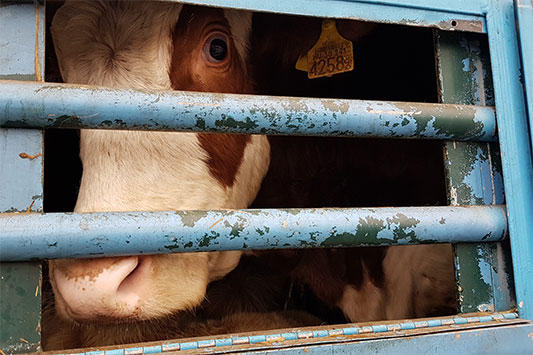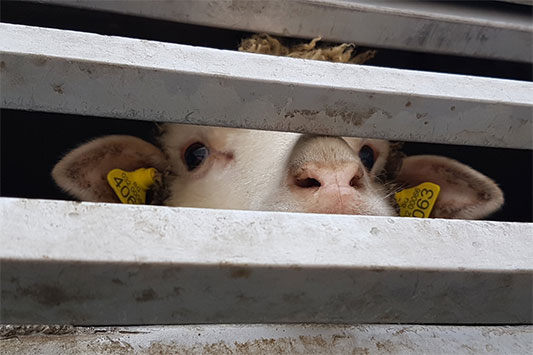Camel Holdings
Camels are bred as 'livestock' in many countries around the world: For the production of meat, milk and wool or leather, for sport, tourism and in many places also for transportation. The global camel population currently stands at over 35 million animals (FAOSTAT 2020). A growing proportion of these animals live on farms.
What are the Animals Suffering From?
Due to their high resistance, camels are known as particularly easy-care animals. In commercial camel husbandry, this is often to the detriment of the animals:
- In many holdings, the camels have to make do without any protection from the weather at all. Even in the Gulf States, where temperatures regularly exceed 40 °C in summer - and can rise to 60 °C - camels are kept in small pens without any shade.
- There is often a lack of water. Even in extreme summer temperatures, camels are only watered once a day, if at all.
- Even in fenced enclosures, many camels have to wear shackles all the time, which contradicts their need for movement and permanently impairs their musculoskeletal system.
- Male camels are often kept in isolation, often permanently tethered and in small stalls or pens, with no freedom of movement and no social contact. It is obvious that these animals often show aggression and behavioral disorders. But many camel cows and young animals also live permanently tethered.
- There is also a lack of preventive health care and veterinary care on many farms. Parasite infestations and skin diseases are not treated, or not treated sufficiently, and sick and injured animals are all too often left to their fate.
What Animals' Angels Does Against it
Between 2014 and 2021, Animals' Angels inspected countless camel farms in Qatar, the United Arab Emirates, Oman and Egypt. The problems at the camel farms were repeated across national borders and the Animals' Angels teams heard the same excuses time and time again:
- As desert animals, camels would not need shade, they could go for days without water
- The males are aggressive and therefore have to be locked away
- If the animals fall ill, it is divine providence
- In many countries where camels are kept, there are no animal welfare laws, the regulations are rarely applied in practice, or they do not apply to animals used for agriculture. Our submissions to the authorities about the problems identified in camel husbandry have been largely unsuccessful. We were also unable to find any guidelines or scientifically based recommendations on the subject of camel husbandry. We therefore decided to start here
As part of a joint project with the University of Bologna, we traveled to Qatar twice in 2019 to collect data on camel husbandry on site. In 2020, the data was analyzed and we were able to scientifically prove what we already knew:
- Camels seek shade in high temperatures
- Camels in commercial holdings should always have access to fresh water
- Animals in constant contact tend to be aggressive
- Veterinary care in many holdings is inadequate
Scientific Publications
The following publications were presented at relevant conferences. We have also sent the research reports to the authorities in the 'camel countries' and made them available to numerous camel scientists.
- Do Camels (Camelus dromedarius) Need Shaded Areas? A Case Study of the Camel Market in Doha
- First Protocol for Assessing Welfare of Camels
- Application of a Protocol to Assess Camel Welfare: Scoring System of Collected Measures, Aggregated Assessment Indices, and Criteria to Classify a Pen
- New Animal-Based Measures to Assess Welfare in Dromedary Camels
- Camel welfare: Survey on Camel Caretakers' Perspectives






![[Translate to englisch:] Julia Havenstein [Translate to englisch:] Julia Havenstein](https://www.animals-angels.de/fileadmin/user_upload/01_Ueber_uns/Menschen/JH.jpg)
![[Translate to englisch:] Helena Bauer [Translate to englisch:] Helena Bauer](https://www.animals-angels.de/fileadmin/user_upload/01_Ueber_uns/Menschen/HB.jpg)
![[Translate to englisch:] Ali Ziani [Translate to englisch:] Ali Ziani](https://www.animals-angels.de/fileadmin/user_upload/01_Ueber_uns/Menschen/ALI.jpg)
![[Translate to englisch:] Conference of the Camels, Saudi Arabien 2024 [Translate to englisch:] Conference of the Camels, Saudi Arabien 2024](https://www.animals-angels.de/fileadmin/user_upload/06_Neuigkeiten/2024/2024_03_06_Saudi_Arabia_Camel_Conference.jpg)

